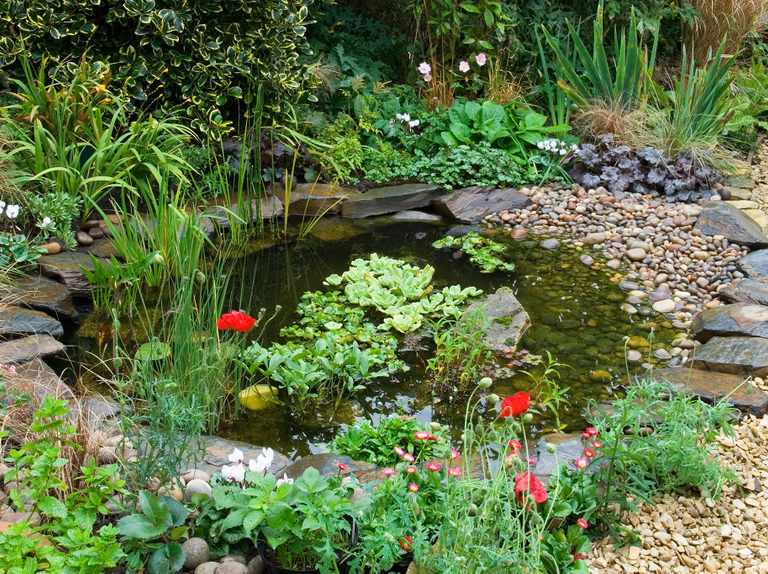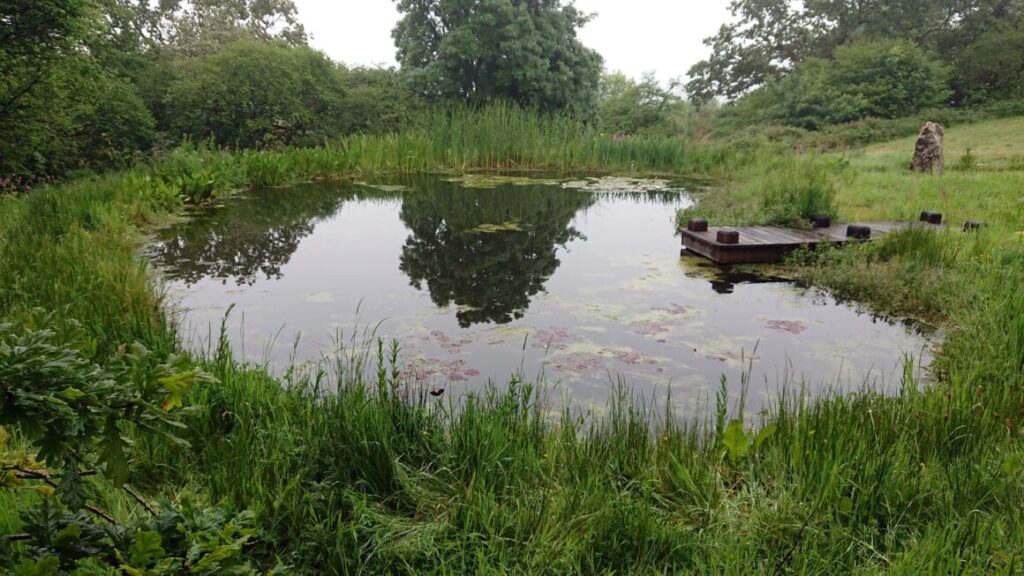The garden pond is a popular project. Water, whether flowing or standing, exerts fascination on people, which is easily enabled by having your own pond. Important for the planning of the pond are, in addition to the selection of plants and creatures, not only the shape or the stream access, but the pond substrate. Here you can learn which substrate is suitable as a base.
Its function is not only to provide support for plants, but to provide a home for fish that require substrate. Pond substrate is just as important as potting soil for flowering plants, so it must be included in the design. With the right substrate, the plants and fish in the garden pond really feel at home and can settle into the artificially furnished realm.
Contents
Substrates
Substrates are what make a garden pond with animals and plants possible. If you choose a pond without substrate, it will remind you of classic fountains and water features, such as those commonly found in castles or museums. In your own garden, of course, such a pond looks out of place, unless this is a landscaping project. Plants, fish and other pond inhabitants, however, need a nutrient base and a way to settle to the bottom. This is where substrates come into play, making the backyard pond an ideal habitat for living things. The classics include sand, clay and gravel.
Tip: As an alternative to the typical varieties, ready-mixed pond substrate is offered that is geared towards special projects. So you can find not only pond soils for keeping different fish, but for natural, swimming or mini ponds, which simply need to be filled into the pond and replaced every now and then
Sand
Just as sand is a typical ingredient in actually all rivers and lakes, it is well suited for your own garden pond. However, not all sand is the same, especially in relation to a pond. Grain size, texture, and the combination with other constituents defines the intended use of the sediment. Sand comes mainly in four varieties:
- fine sand: ideally suited for pond plants, accumulates sufficient nutrients, not suitable for fish
- coarse sand: ideally suited for fish, is not easily stirred up, also well suited for plants
- Sand and clay: perfectly suitable for small ecosystems, can be laid accurately
- sand and gravel: a good mixture for fish and isolated plants
Sand as a pond bottom should always be matched to the intended use. For example, if you are creating a large garden pond and want to keep many fish and plants, a clay-sand mixture is always recommended as a substrate. The sand provides the necessary nutrients, while the clay provides the necessary support. Many fish can hide in the soil, for example, and over time the nutrient content will adjust to the ecosystem in the pond. Sand is also easy to change when it becomes necessary.{infobox type=check|content=Tip: When choosing sand, be sure to pay attention to the color, because it significantly affects the overall appearance of the garden pond. If you use an almost white sand in a shady corner of the garden, the pond will stand out badly and could look out of place, which of course also applies to the gravel used

Gravel
Gravel is a popular alternative to sand, but you have to be careful. Gravel often leads to damage of the pond liner, which is of course not desirable. Gravel is therefore used as a substrate in only two ways:
- Ornamental gravel: decoration of the shore areas, rarely in flower pots planted directly in the water.
- fine gravel: excellent for plants
Because gravel releases few nutrients into the garden pond, the water remains clear and does not become contaminated as quickly as sand. Therefore, plants can settle into the pond well. When using gravel, make sure that it is washed before filling it in. This way, the water will be less polluted and there will be no small objects in the garden pond that could negatively affect the plants and fish.
Tip: When applying, do not confuse gravel with lava grit, because these two substrates are applied for different purposes. Compared to gravel, lava gravel is not used for the installation of classic pond projects, but for the implementation of a swimming pond, because the volcanic rock with its surface allows a good grip for aquatic plants and is not easily stirred up
Clay
With clay you can find a substrate in the garden pond, which is quickly consolidated and only a little stirred up. Clay is always used together with sand or pond soil and can be used for keeping fish and plants at the same time. When choosing a substrate, you should use only brown clay powder, as it is the most suitable for the pond and can be laid without any problems. Since clay stores high amounts of nutrients compared to sand and gravel, even very hungry plants like mock cypergrass sedge (bot. Carex pseudocyperus) can be grown.
Creating pond substrate explained briefly
Once you’ve decided on a substrate to use as a base, fill the pond 30 percent full with water to compact the pond bottom. The compaction also tightens the pond liner, which makes it easier to insert plants. This is because these are placed in the substrate shortly after the water is let in. These are plants of the deep water zone, which are not so easily accessible later. At the same time, electronic and mechanical components are placed in the pond, such as the pump or water features. After that, it is filled and the remaining plants are inserted. Compaction is especially important in sandy soils.
Tip: When using substrate, it is important to plan ahead. Never add substrate to a garden pond with a soil drain, as it could become clogged
Conclusion
Pond substrate is essential to allow plants and fish to have a home in the garden pond. Since the right substrate can be found for every type of garden pond, small ecosystems can be implemented that blend attractively into the garden. If safety instructions such as the grain size of the gravel are observed, nothing will go wrong during the implementation.



